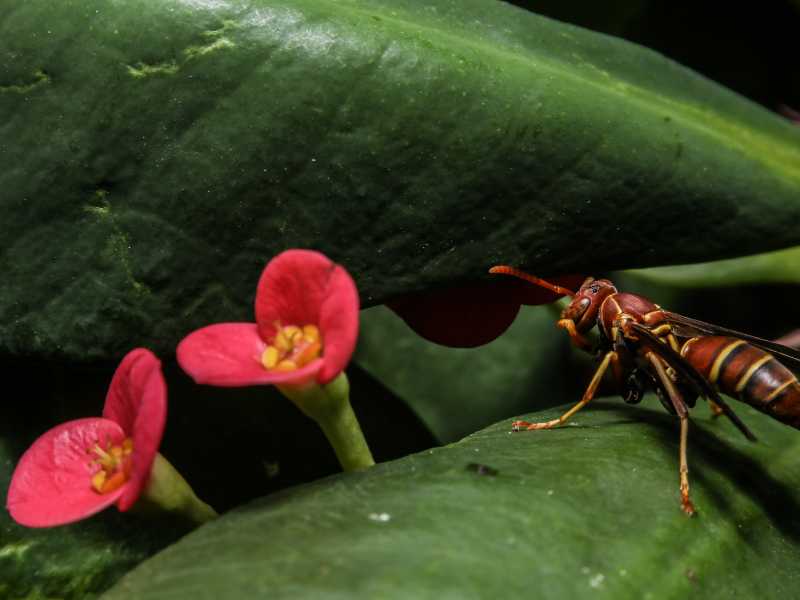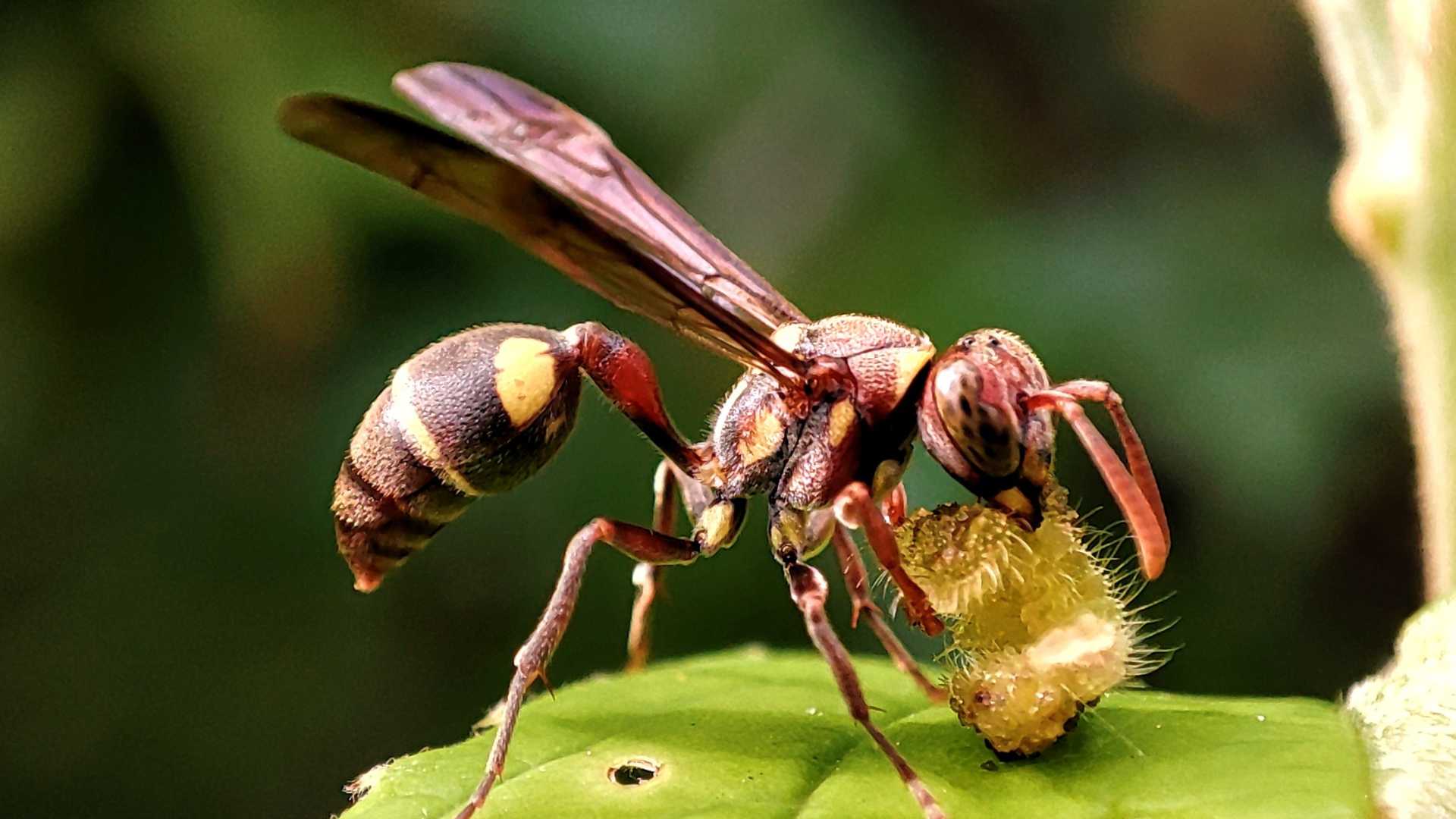Paper Wasps: Identification, Behavior, and Control
Header: What are Paper Wasps?
Paper wasps are a common type of wasp found throughout North America. They are known for their distinctive papery nests, which are made from a mixture of wood fibers and saliva. Paper wasps are often found in gardens, on eaves, and under porch roofs.

Header: How to Identify Paper Wasps
Paper wasps are slender, black or brown wasps with yellow or orange markings. They are about ¾ to 1 inch in length and have long, thin bodies with narrow waists. Paper wasp nests are usually gray or brown and have an open, umbrella-like shape.
Paper Wasp Behavior
Paper wasps are not typically aggressive but can sting if they feel threatened. They are beneficial insects that help control other pests in gardens and yards. However, if they build their nests too close to human activity, they can become a nuisance and pose a risk to people with allergies to wasp venom.
How to Control Paper Wasp Infestations
If you encounter paper wasps in your home or yard, it’s important to take action to prevent the infestation from growing. The safest way to control paper wasps is to call a professional pest control service, who can safely remove the nests without posing a risk to you or the wasps.
Preventing Paper Wasp Infestations
Preventing paper wasp infestations is important to avoid the need for costly treatments. To prevent paper wasp infestations, remove any potential nesting sites, such as old furniture or clutter. Seal any openings or cracks in your home’s exterior to prevent wasps from entering.
Interesting Facts about Paper Wasps
- Paper wasps are social insects and live in colonies, with each colony consisting of a single queen and her offspring.
- Paper wasps are beneficial insects that help control other pests in gardens and yards.
- Paper wasps can sting multiple times, unlike honey bees who can only sting once.
In conclusion, paper wasps are beneficial insects that play an important role in controlling other pests in gardens and yards. However, if they build their nests too close to human activity, they can become a nuisance and pose a risk to people with allergies to wasp venom. By understanding how to identify paper wasps, prevent infestations, and control them safely, you can protect yourself and your property from these unwanted pests.
Get In Touch
If you need more information about our services, give us a call today or fill out our online contact form to be contacted by one of our staff members.
-
-
-
Find us:
Fort Myers, FL or
Ruskin, FL -
Hours:
Mon-Fri- 7am – 7pm
Sat: 7am - 12pm
Sun: Closed



